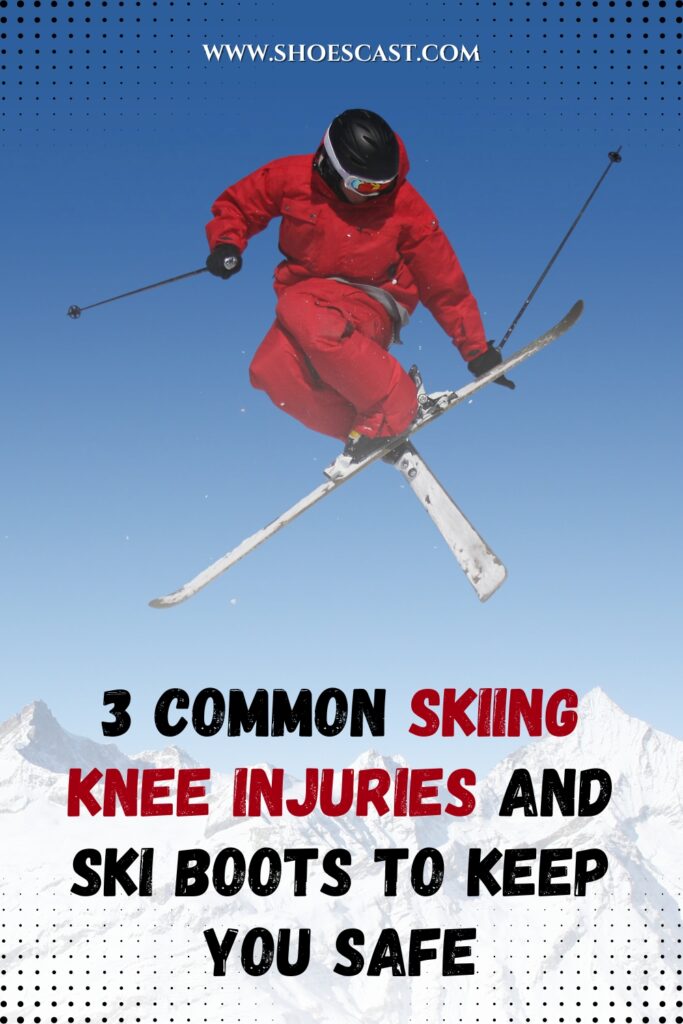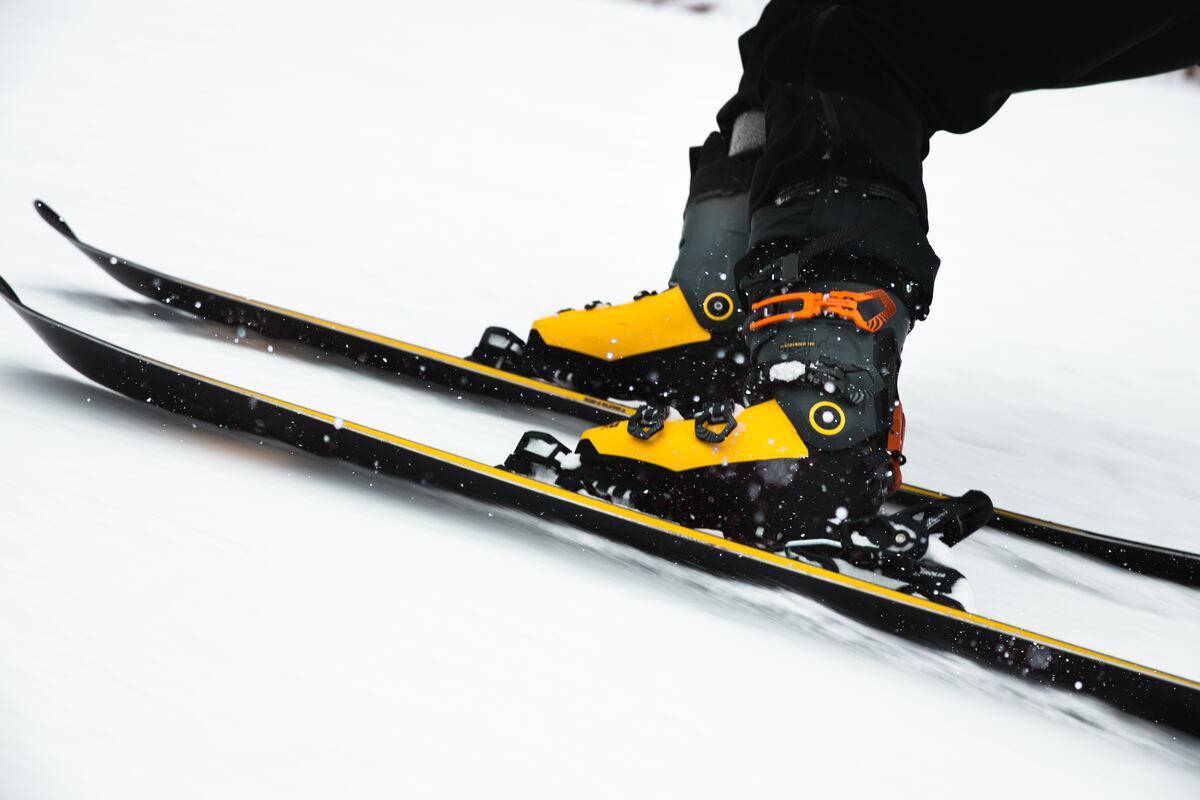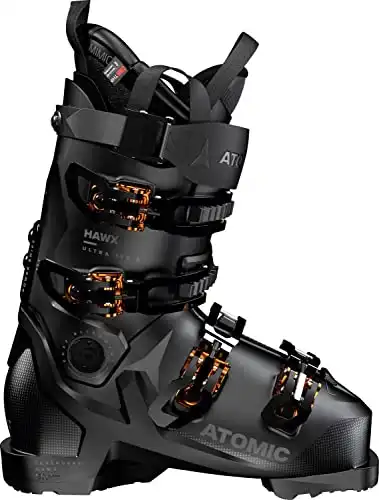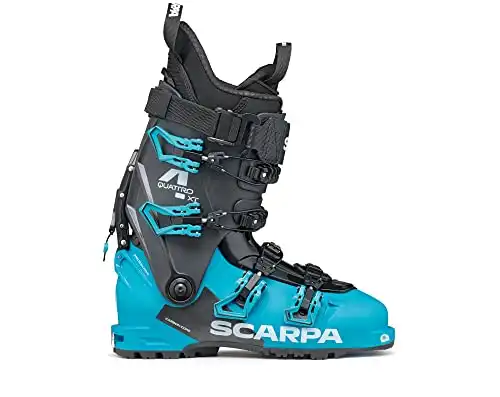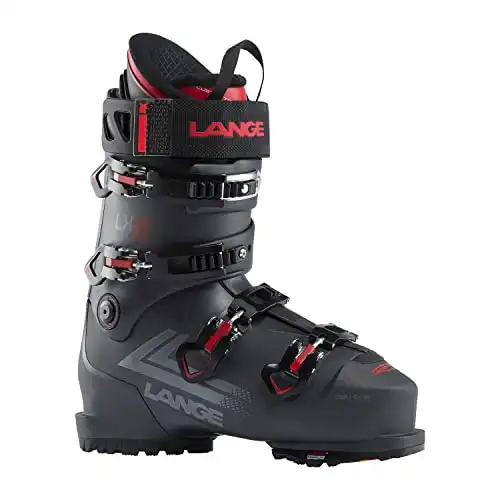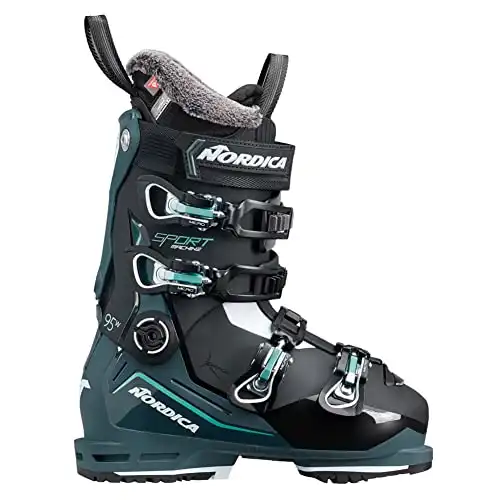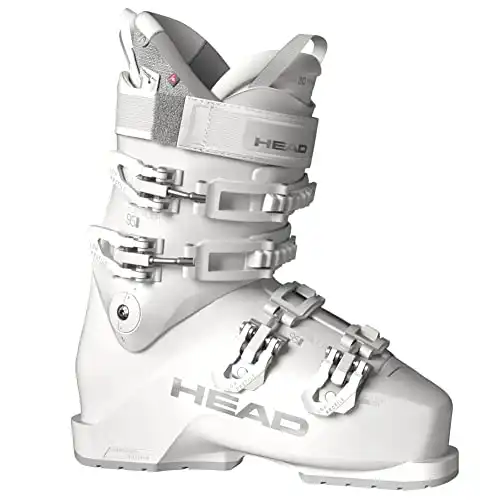Now, there’s a trend among people to paint certain activities as more dangerous than others. “You’re safer skiing down the mountain than you are driving your car to get there,” for example. “You’re safer skiing than you are riding a bike,” too. But, how come when you go skiing you end up with a skiing knee injury?
Before you start talking down on your skiing skills, you’re one of the hundreds of thousands of people who hit the slopes every single year thinking they’re safe because they’re pros. Whether you’re a newbie or a pro, you’re bound to make a wrong move, slip, and fall on your butt every now and then.
When you do that, though, you might end up with a nasty knee injury that causes you to cut your trip short or wear a brace for the rest of the trip. Whatever the case might be, you might be on the hunt for more deets on the most common skiing knee injuries to ensure you’re prepared when you hit the slopes.
We’ve got you covered down below!
What are the most common skiing knee injuries?
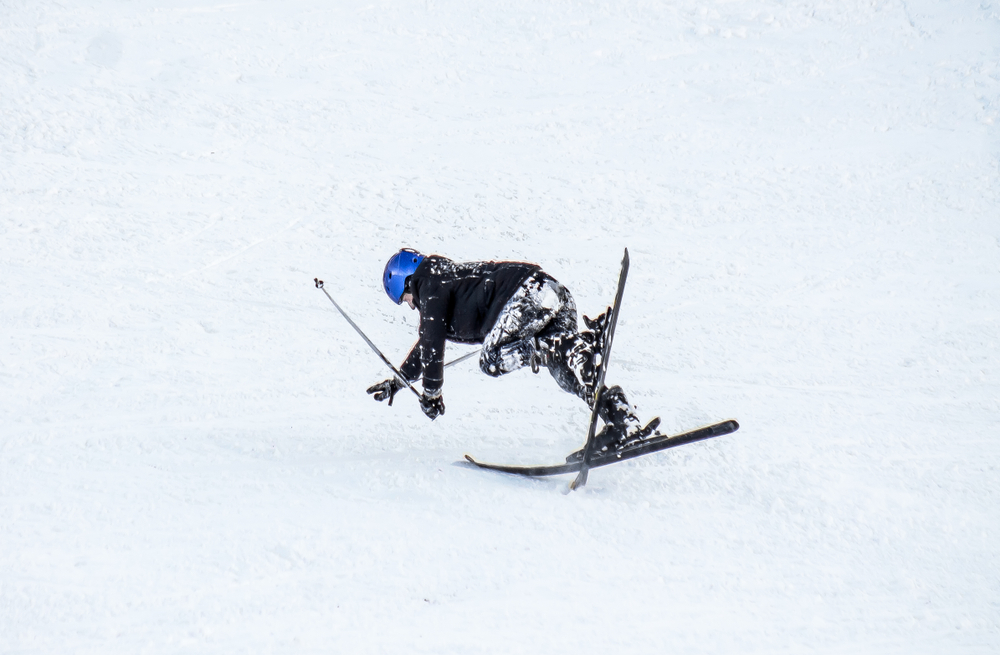
Pro skiers might not be prone to slipping and falling, but studies suggest that recreational, downhill skiers are. Depending on a few factors, they’re most likely to experience some of the common skiing knee injuries – namely a medial collateral ligament tear, an anterior cruciate ligament tear, or a meniscus tear.
Although that might sound strange, ski boots are responsible for the fact that ligament injuries became the most common injuries among skiers. With all the innovations and improvements that modern ski boots went through over time, far fewer skiers experience bone fractures and severe trauma.
Different factors affect whether or not you’re going to need medical assistance while you’re on the slopes. From your gender and muscular strength to your competence and weather conditions, these things determine the outcome of your embarrassing downhill fall.
1. Medial Collateral Ligament (MCL) Tear
Circling back to the most common skiing knee injuries – a medial collateral ligament tear (or an MCL tear). This injury occurs when you end up twisting your knee too far or your knee takes a sudden, strong hit. Now, an MCL’s a ligament that’s located along the side of your knee.
When you’re using the “snow plow” technique to slow or stop, you’re putting your knees at risk. If you lose control, the sudden force of the twist or the impact can tear your MCL.
Check whether an MCL tear’s something you’re suffering from by observing your symptoms. Knee pain, a locking sensation in your knee, feeling like your knee might give out, and popping sounds are telltale signs that something’s off.
Schedule an appointment with your doctor ASAP.
2. Anterior Cruciate Ligament (ACL) Tear
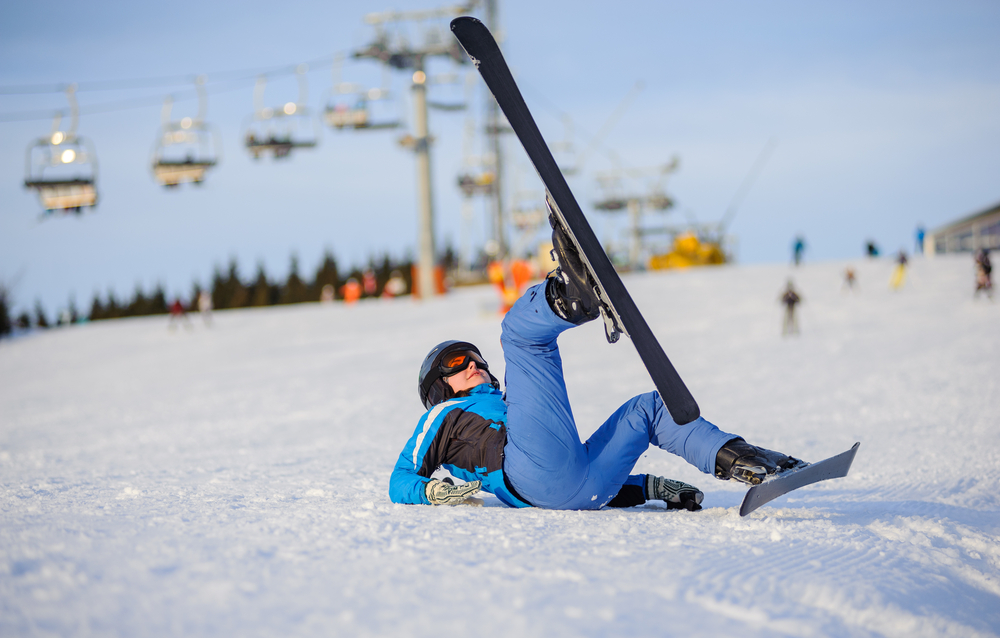
Another day, another tear… Anterior cruciate ligament tear, or an ACL tear, comes a close second as one of the most common skiing knee injuries. An ACL tear occurs when your knee gets twisted more than what’s considered a normal range of motion for a knee.
An ACL’s one of the four ligaments that prevent excessive movement. And, an ACL tear might happen when you fall backward, catch an edge, or land on your knee – chances are, you’re going to hear a popping sound when that happens.
On top of that, you’re going to experience severe, sharp pain, swelling, limited range of motion, and a feeling that your knee might give out if you put any pressure on it. Of course, you’re going to need to contact your doctor as soon as you get back from the trip to start treatment.
3. Meniscus Tear
A meniscus tear also occurs when there’s a sudden rotation of the knee, whether you twist your knee a little too much when you’re turning left or right or you land on your knee when you lose balance.
A meniscus tear gets its name after the two C-shaped pieces of cartilage known as menisci. Menisci absorb shock, distribute your weight evenly in your knee joint, and stabilize your knee.
When they’re torn, however, they’re unable to perform. When you tear your meniscus, you’re going to experience sudden, sharp pain in your knee joint, swelling, stiffness, a popping sensation, and a feeling of your knee locking.
What’s the best way to reduce the risk of a skiing knee injury?
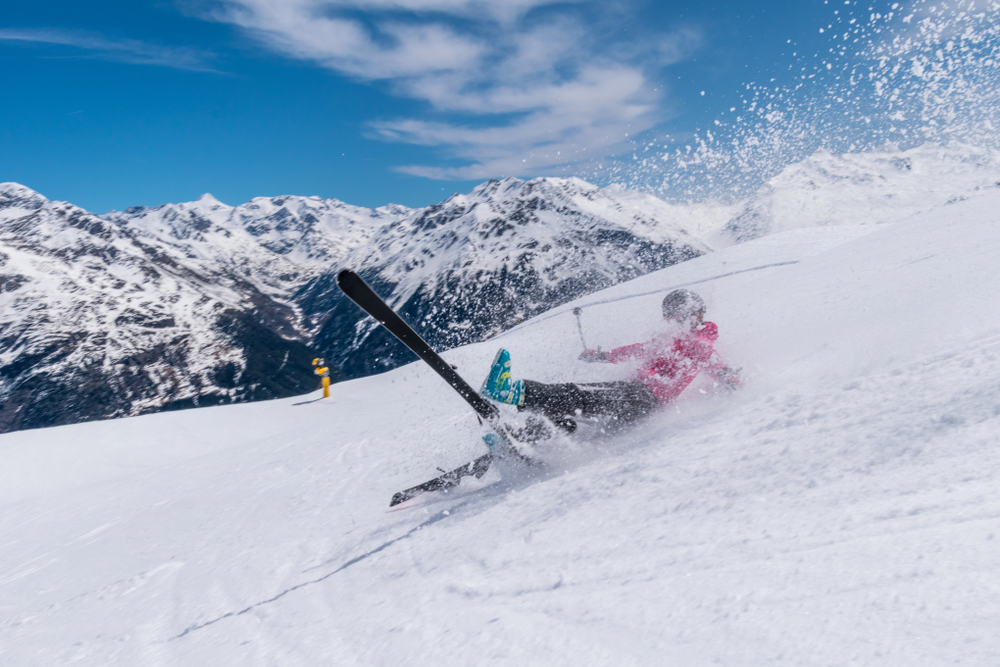
We know you’re eager to hit the slopes, but we urge you to take measures of precaution to ensure you don’t end up twisting your knee. Right off the bat, you might focus on your fitness and physical health before the ski season.
Cardio, strength training, flexibility training, and balance exercises might save you the trip to the doctor. The stronger you are, the more likely you are to perform better and avoid slipping and falling. Make sure to get the right equipment, too.
Get your hands on high-quality, supportive, and protective boots. Check whether your bindings, poles, and skis are perfect for your height, weight, and ability. When you’re getting ready to go downhill, don’t forget to warm up.
Do a couple of stretches, massage your knees and feet, and make sure your muscles are ready to go – that’s going to make a world of difference.
Remember to use the proper technique to ensure you’re staying safe. Spend a few hours with a trainer before going downhill on your own, too.
Choose the right terrain. Beginner skiers need to build confidence and spend enough time practicing with a trainer. But even experienced skiers need an hour or two to get back on track before going down the more challenging terrain. Don’t be embarrassed to take a break when you’re tired.
Now, about the high-quality, supportive, and protective boots we mentioned beforehand – we’re bringing you a few of our favorite picks to get you started.
What are the best ski boots to wear when you’re recovering from a skiing knee injury?
1. Atomic Hawx Ultra 130 S GW
Starting with a bang, the Atomic Hawx Ultra 130 S GW boots are one of the best ski boots on the market at the moment.
Whether you’re on the hunt for heat-mouldable, completely customizable boots or ones that come with heaps and heaps of EVA foam for comfort, these are the perfect fit for you.
We’d argue that they’re more suitable for advanced and expert-level skiers, but they’re not a bad option for beginner skiers that plan on working hard during the season.
We do need to mention that the whole heat-mouldable thing means you need to customize them by heating them in the oven and molding them to your feet afterward.
2. Scarpa 4-Quattro XT
Scarpa 4-Quattro XT boots come a close second because they’re not heat-mouldable the same way that Atomic Hawx Ultra 130 S GW boots are. They’re made with heat-mouldable liners, but the shells are made with plant-based plastic and carbon for added stability and support.
They’re equipped with hooks, ladders, and cables that keep them secured to your feet. They’re lighter than other boots because they’re made with bonded Grip Walk soles rather than screw-on pads.
We do need to mention that they’re one of the most expensive boots on the market, but they’re worth the staggering price because they’re that strong and comfortable.
3. Lange LX 100 HV GW
With Lange LX 100 HV GW, you can get great boots with plenty of favorable features for a fraction of the price. Whether you’re a beginner skier or someone who doesn’t want to break the bank on boots that are worn season to season, you can count on these to exceed your expectations.
To begin with, they’re equipped with Lange’s Dual Core tech which features softer and harder plastics for a smooth flex and an energetic rebound.
They’re forgiving on the shins because they’re softer than most boots – they’re designed to be comfortable and supportive, rather than protective. They’re easy to slip on and off, too, which might be something you’re searching for. They’re a great option to consider when you’re low on cash, that’s for sure.
4. Nordica Sportmachine 3 95 W GW
Nordica offer you a fully customizable experience with the Nordica Sportmachine 3 95 W GW boots – they’re made with heat-mouldable liners and shells, designed to accommodate higher-volume feet, and produced with a bunch of hooks, ladders, and cables to ensure they’re fully adjustable.
They’re made with a lot of attention to detail and are aimed at experienced skiers who know what they’re searching for. They are suitable for beginners, too, but beginners might need some time to get used to them. They’re cheaper than some of the other boots we mentioned beforehand, too.
5. Head Formula 95 W GW
We’ve saved the most attractive ski boots for last – the Head Formula 95 W GW boots are perfect for showing off, whether you’re showing off your ski skills or your sick ski fits.
Whatever the case might be, these boots are guaranteed to get you downhill without the pain and pressure that comes with hard shells.
They’re made with heat-mouldable shells and liners, flexible, and lightweight. They’re equipped with plenty of wiggle room for your toes, too – you don’t have to worry you’re going to get skier’s toe with these on. We’d recommend them for stronger intermediates, but beginners can take a chance, too.
